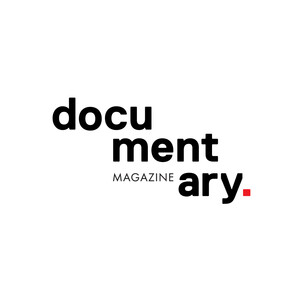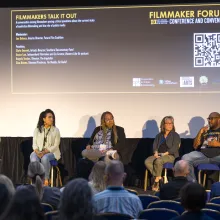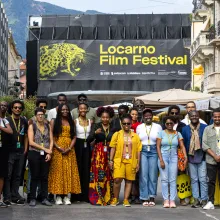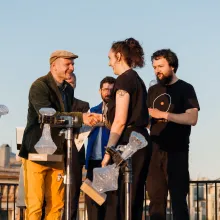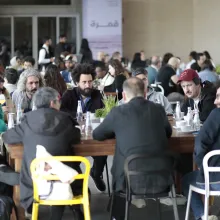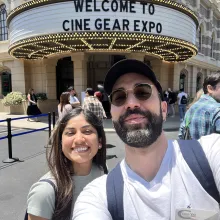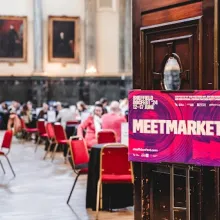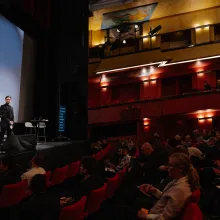From June 23-26, Sunny Side of the Doc, France's international documentary marketplace nestled in the charming historic seaport on the Bay of Biscay
Markets & Industry Talks
At this year’s edition, the Basque festival demonstrated why it prides itself on its political conscience, with many of its titles exploring
The 3rd annual Filmmaker Forum at Hot Springs was at its best when its attendees got candid about the industry’s unsettling present and uncertain
The venerable Swiss festival featured its usual boundary-pushing works alongside industry activities that showcased documentary’s capacity to adapt
Last year, national and international press widely reported on what The Globe and Mail described as “the most tumultuous year in the festival’s history,” complete with sweeping personnel changes, social and financial pressures, and the temporary closure of their flagship Ted Rogers Cinema. Though Hot Docs managed to pull through for its 32nd year with a new executive director (Diana Sanchez, formerly of TIFF) and a replenished staff (some of the programmers, including department head Heather Haynes, returned after their prior exodus), what frightened this hamstrung fixture of Toronto’s flailing film scene was dismally clear. Social issues don’t entirely permeate the programming, nor do their chosen films observe such issues in totality, but Hot Docs has always strived to stay in tune with urgent matters of the present, especially through films that align their audience’s point of view with what will one day be the right side of history.
Founded in 2008, Doc Alliance is a collaborative network of seven key European documentary festivals—CPH:DOX, Doclisboa, FIDMarseille, Ji.hlava, Vision du Réel, Dok Leipzig, Millennium Docs Against Gravity—dedicated to promoting arthouse non-fiction cinema and supporting emerging filmmakers. For over 15 years, the initiative has played a pivotal role in strengthening the continent’s documentary scene by fostering inter-festival collaboration and increasing exposure for independent work. Spearheading many of its recent efforts is Galya Stepanova, the network’s coordinator and one of the driving forces behind its growing industry profile. Ahead of this year’s Cannes Film Festival and its Marché du Film (May 13–24), Documentary magazine sat down with her to discuss the Doc Alliance Award, long-term strategic goals, and how the network is adapting to better serve new voices and cross-border exchange.
Qumra, the Doha-based industry event, named after the Arabic word believedto be the origin of “camera” and taking place from April 3–9, aims “to provide mentorship, nurture talent, and foster hands-on development for filmmakers from Qatar, the region, and beyond.” Out of the 49 selected projects, 12 feature-length documentary projects were presented in Doha: four in development, two in production, two Works-in-Progress, and four picture-locked. The line-up was rounded off by four short documentaries, all with Qatari involvement. Qumra is rooted in a fairly freewheeling format: at times, press and industry attendees mingle over lunches, mocktails, and networking events; at others, they follow separate paths. Nonetheless, the gathering unfolds across a limited number of venues, including the iconic Museum of Islamic Art and two luxury hotels in the brand-new district of Msheireb.
IDA’s tips for navigating your first Cine Gear Expo—IDA staff Zaf and Janki give advice on making the most of a large commercial event.
Janay Boulos attended Sheffield DocFest to take meetings and network for the two feature documentaries she's producing. She shares tips for filmmakers looking to make the most of the festival landscape: “Pace yourself! It’s a marathon, not a race.”
“In a time when public interest media is in jeopardy—from market forces, from big tech, from political pressures—we need to organize,” declares DISCO
